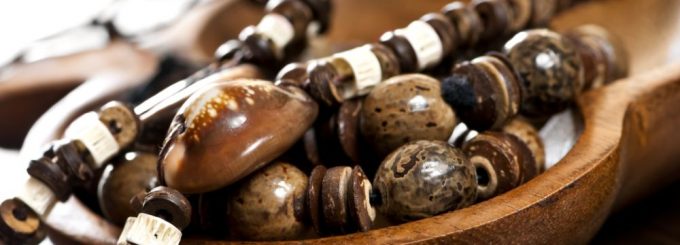An Introduction to Bone Jewelry

While bone jewelry might not sound glamorous to some, it is an ancient art form that was one of the earliest adornments worn by man, and is perfect for those who are looking for a tribal, prehistoric and eco-friendly look.
Bone Jewelry Origins
This form of jewelry was worn by the earliest humans, including Neanderthals and Denisovians. It includes animal bones, teeth, and shells which were combined with stone and carved wood. It is likely that such items played a functional role at first, but would eventually be used as religious symbols and decorative ornaments.
The most popular type of bones were those of birds, since they were small yet hollow which means that it didn’t take a great deal of modification to transform them into jewels such as pendants and beads. Additionally, avian bones were ideal for the creation of whistling instruments that were desirable to shamans who used them to dismiss or summon spirits. Archaeologists have discovered “Venus figurines” which were created from bones which had been carved using stone tools. Sharp stones could be used as primitive saws, along with sandstone or slate for grinding. This allowed for the creation of spectacular jewelry, even by today’s standards.
Snake vertebrae in particular made excellent beads and merely needed to be cleaned prior to being formed into an intricate necklace. Perhaps the most popular type of bone is sheep or deer hooves which were used for clackers both by Native American tribes as well as the Scythic peoples of Southern Russia.
Advancements
As with other forms of jewelry, bone ornamentation increased in complexity over time, despite having to compete with the likes of silver, gold, bronze, iron, steel and gems. Mesoamerican bone jewelry in particular had reached its zenith during pre-Columbian times. By this point the Amerindians had mastered the art of fine grinding which they applied to shell beads, coral and turquoise to produce helshi necklaces and masterful carvings of bone and wooden beads.
Some of the Native American bone jewelry was so intricate that it took years to complete and must have carried an extremely high price tag. Each piece of jewelry has a story associated with it and in many cases had symbolic meaning. In New Zealand bone jewelry was used to signify the bringing of purity and life to the world, along with tranquility and peace.
Bone Jewelry in Modern Times
Bone jewelry is far from obsolete. While not as popular as diamonds, gold, silver, platinum, rubies or emeralds, there is nevertheless still an industry devoted to it. For example, in Indonesia bone beads are extremely popular and craftsmen create pieces both for the local and international market.
While some contemporary bone jewelry is still crafted by hand, many craftsmen are now utilizing the latest technology to mass produce these jewelry pieces while covering them in lacquer and paint to provide additional protection.


